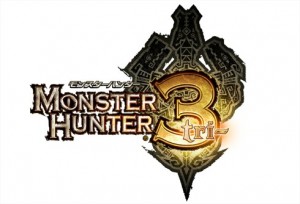What do YOU think? A winning formula for selling third party Wii titles

The last article I wrote, “What do YOU think? Wii is the best console for third party ‘core’ titles?”, discussed the idea of sales comparisons from the PlayStation 3 and Xbox 360 to the Wii as being unfair, because developers were comparing top-quality titles to mediocre titles and expecting similar sales. In that article, I stated that a game needs 2 things to sell well: Good reviews, and good advertising. Of course, it helps if the game isn’t a niche genre, but that is the least important of the three. In the last 2 months, two big Wii titles have been released, both of which have gotten pretty good review scores and a good amount of advertising; Monster Hunter Tri, and Red Steel 2. The latter of these two titles supposedly sold just 50,000 copies in its first month. Now, some people say that Red Steel 2’s first month wasn’t really a full month (12 days), and other sources report that the game has in fact sold more than 100,000 units, but based on the official numbers given to us by Ubisoft, it’s a solemn start for an (apparently) very good game.
So, if Red Steel 2 has already flopped, how much of a chance does Monster Hunter Tri really have at selling? I really don’t know for sure, but I can make a good guess by using something called the “TPW Theorem”, which is a new mathematic formula for third party Wii developers to estimate the sales of their game. The TPW Theorem is as follows:
S=N²AR
Where S = Sales (in hundreds), N = Nichity level, A = Advertising coefficient, and R = Aggregate Review Score

Wait… what?
Let me go into detail, by using Monster Hunter as an example:
Nichity Level
The nichity level is determined by using an incredibly complex sampling distribution survey thing that is tough to explain in words, but if you don’t have access to the materials needed to do such a thing, estimation is also suitable. Nichity levels range from 0 to 1, 1 being very mainstream, 0 being very niche. Seeing as how Monster Hunter is a franchise that actually has yet to catch on in America in any respect, an accurate estimation of its nichity level would be around a .7 or so.
Advertising Coefficient
The advertising coefficient is a positive number that is found by taking the number of dollars spent on advertising and dividing by 1000. Once again, if you aren’t able to get the exact number, you can estimate what this number might be by looking at how many ads you see on a day to day basis, and multiplying it by 100. Generally, one can expect to see about ten thousand ads for Monster Hunter daily (see: gigantic ‘Lagiacrus’ promo poster), the advertising coefficient is somewhere close to one million.
Aggregate Review Score
Mathematicians have argued for generations about whether the aggregate review score for this formula should come from metacritic.com or from gamerankings.com, both of which are accurate measurements of the variable. For my uses, I’ll choose metacritic. On metacritic, Monster Hunter Tri’s aggregate review score is an 84.
So, the idea behind this formula is to give us an accurate estimate as to what the sales for Monster Hunter Tri will be by taking all of the necessary variables into account: Reviews, ads, and nichity. Here’s the outcome:
S=N²AR
S=.7²x(1,000,000×84)
So, since .7 squared is .49… then divide that and carry the four…
According to the formula, Monster Hunter Tri will sell 41 million copies!
Wait a second…